Written by: Nick Tricarico, All Breeds Cat Judge
Cats have been on this earth as long as people, if not longer. Cats were revered in some countries, such as in ancient Egypt, and are commonly accepted as household members. It is interesting to see how some of today’s breeds developed from their ancestors or were fashioned as unique breeds. Here are just a few…
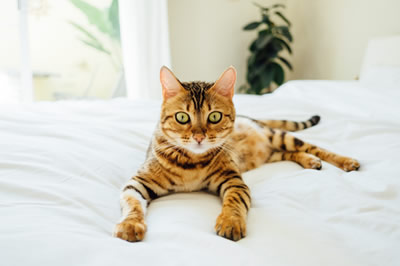 The Abyssinian cat that we recognize today was bred in Great Britain and named after ‘Abyssinia’ (now Ethiopia) where they supposedly originated. Widely-spread stories existed of British soldiers deployed to North Africa in the nineteenth century who returned home with Abyssinian kittens. These were bred with other cat varieties to develop a breed with a unique ticked coat where individual hairs are banded with different colors.
The Abyssinian cat that we recognize today was bred in Great Britain and named after ‘Abyssinia’ (now Ethiopia) where they supposedly originated. Widely-spread stories existed of British soldiers deployed to North Africa in the nineteenth century who returned home with Abyssinian kittens. These were bred with other cat varieties to develop a breed with a unique ticked coat where individual hairs are banded with different colors.
The Australian Mist cat, a breed that was originally called the Spotted Mist cat, was developed in Australia by Dr Truda Straede by crossing the Burmese and the Abyssinian—along with an assortment of domestic shorthaired cats—to create a cat with a unique spotted or marbled coat pattern.
The Bengal breed is a hybrid of the Asian Leopard Cat and domestic shorthaired cats, and was developed to look like an exotic jungle cat.
The Birman, otherwise known as the Sacred Cat of Burma, is often claimed to have originated as a companion of temple priests in northern Burma. Several Birman cats were exported to France and were bred with other cats, including the Persian and Siamese, which created today’s point colors. The original cats were seal point.
The British Shorthair breed is the pedigreed version of the traditional British domestic cat, and is believed to have been brought to the country by the invading Romans in the first century AD. The cats had been imported to protect the Roman grain houses from mice, and they mated with local domestic cats to create today’s breed. The gene pool in the UK was decimated during the Great Wars, and the breed was therefore outcrossed to the Russian Blue, Chartreux and Persian breeds to increase the gene pool.
The Burmilla originated in the UK in 1981 following the accidental mating of a Chinchilla Persian and a Burmese. The resultant Burmese-looking cats with silver undercoats and ticked or tipped coats proved an attraction and led to further breeding.
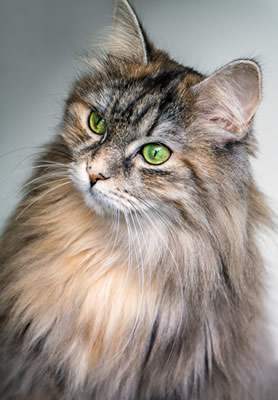 The Cornish Rex, which has a short, thick and plush, curly or wavy coat with crinkled whiskers and eyebrows, has been refined from a naturally mutated curly coated kitten found in a domestic cat’s litter in Cornwall, UK. Likewise, the Devon Rex breed was discovered by Beryl Cox in Buckfastleigh, in Devon, UK, again using a naturally mutated curly-coated kitten found in a domestic cat’s litter. The breed was then developed using the curly-coated offspring and domestic shorthaired cats.
The Cornish Rex, which has a short, thick and plush, curly or wavy coat with crinkled whiskers and eyebrows, has been refined from a naturally mutated curly coated kitten found in a domestic cat’s litter in Cornwall, UK. Likewise, the Devon Rex breed was discovered by Beryl Cox in Buckfastleigh, in Devon, UK, again using a naturally mutated curly-coated kitten found in a domestic cat’s litter. The breed was then developed using the curly-coated offspring and domestic shorthaired cats.
The Scottish Fold breed originated from a natural mutation that occurred in a litter of kittens born to Susie, a white barn cat who had an unusual fold in her ears. Susie was found on a farm in Perthshire in Scotland, in 1961. She later had a litter of kittens and two had folded ears. Today the breed has small ears folded forward and downwards and resembles an owl.
One myth is that the Maine Coon breed descended from ancestors of semi-feral domestic cats and raccoons in Maine, USA. The generally accepted hypothesis is that the Maine Coon breed descended from pairings of local shorthaired cats with longhaired cats brought from overseas by English seafarers.
The Tonkinese is a domestic breed produced by crossbreeding Siamese and Burmese cats. The ideal Tonkinese should be intermediate in type, neither svelte like the Siamese nor cobby like the Burmese. Everything about the Tonkinese should be intermediate between the two breeds in all aspects.
There are many other breeds with unusual beginnings, but I hope that I have stimulated your curiosity enough for you to want to research these.
For more stories by Nick Tricarico, visit the Happy Cat’s Litter website. Happy Cat’s Litter is Cats and Diabetes preferred supplier of environmentally friendly, biodegradable, organic and compostable cat litter.
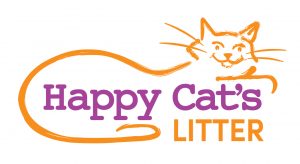
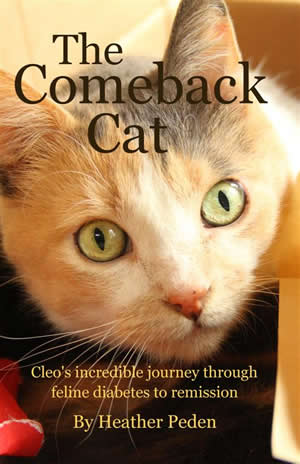 In the latter part of 2014, my cat Cleo was diagnosed with feline diabetes. She had just turned nine when she dropped a bunch of weight and then started walking funny; her hocks clonked noisily against the floor and she struggled with the stairs.
In the latter part of 2014, my cat Cleo was diagnosed with feline diabetes. She had just turned nine when she dropped a bunch of weight and then started walking funny; her hocks clonked noisily against the floor and she struggled with the stairs.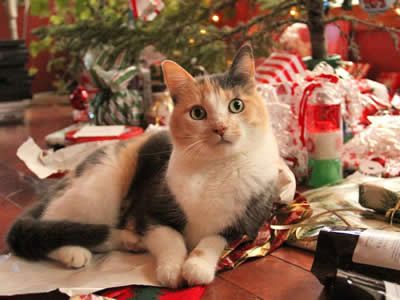 It was amazing to watch her body heal, and it happened quickly after I got all the pieces in place. By the end of March 2015, Cleo no longer needed insulin injections and by the end of that summer you wouldn’t guess that she had ever been sick. Her legs, which I was sure would never be normal again, repaired themselves a little more each day until she was leaping about the house like she had when she was a precocious two-year-old.
It was amazing to watch her body heal, and it happened quickly after I got all the pieces in place. By the end of March 2015, Cleo no longer needed insulin injections and by the end of that summer you wouldn’t guess that she had ever been sick. Her legs, which I was sure would never be normal again, repaired themselves a little more each day until she was leaping about the house like she had when she was a precocious two-year-old.